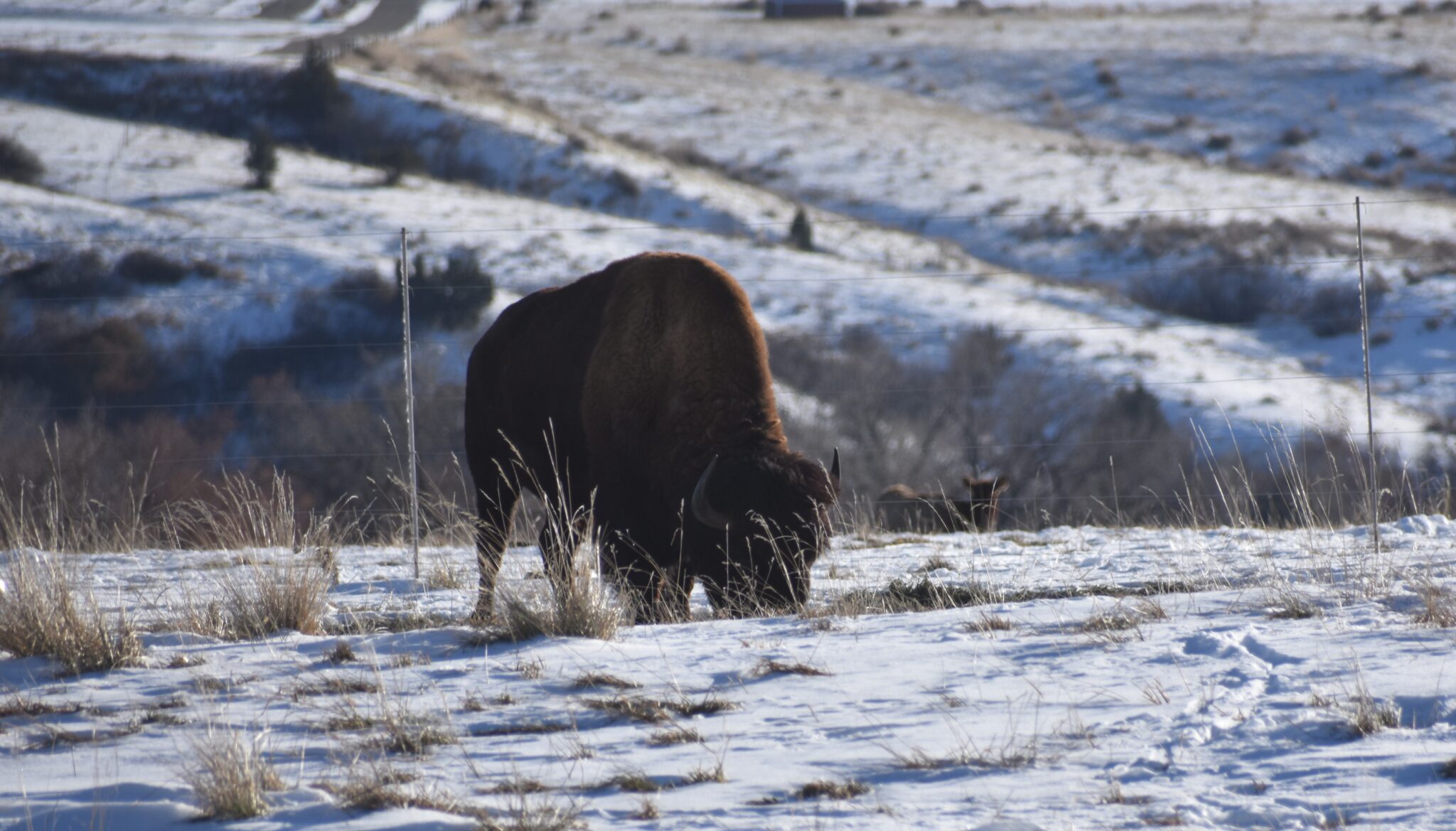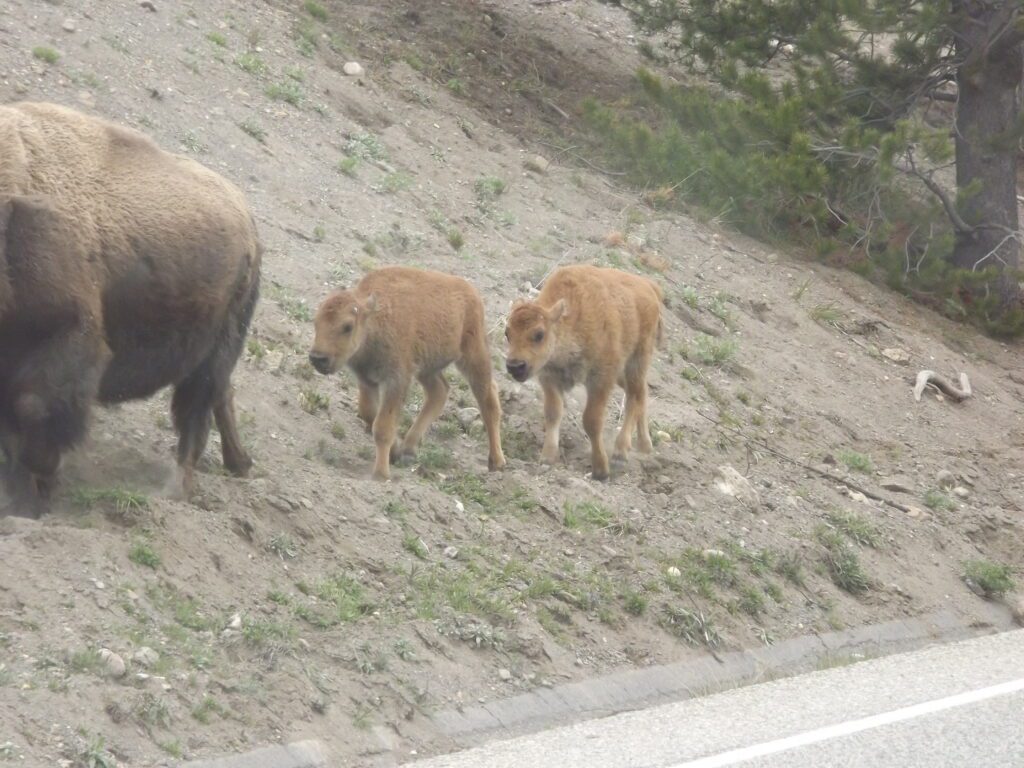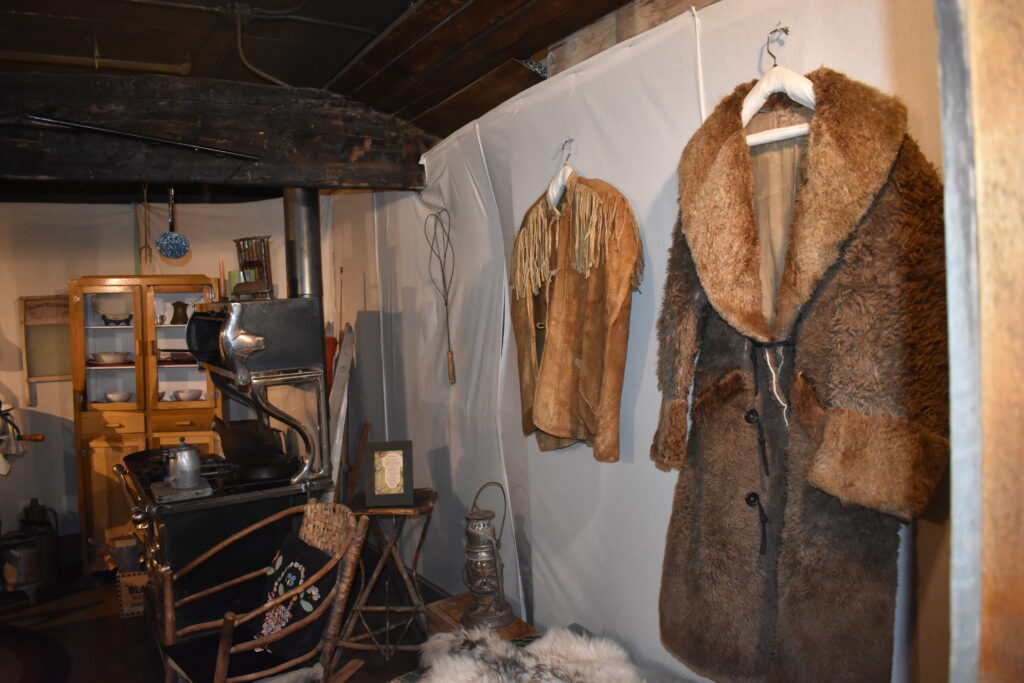News
Shearing Buffalo was Promoted Over 100 Years Ago

Most everyone knows that the American Bison, aka buffalo, were a staple of the plains Indians. They provided meat, tepee covers, warm robes and bed clothes for the winter. But an interesting bit of history was the fact that other enterprising men discovered the value of buffalo wool over 100 years ago.
From the Cheyenne Leader, in February of 1888 – The Buffalo Question. A solution which should be adopted at once. There is no question in taxidermists Richardson’s opinion that the buffalo is now well-nigh extinct on the plains. There are a few in Yellowstone Park protected by the government, but they are likely to be killed at any time. In Texas a herd of about thirty is owned by one ranch man; several other small bunches maybe found, but the days when they rambled at large over the country have been numbered. Unless some means of protecting them is adopted within ten years the American bison must likely become an extinct species.
In Central Park, Director Conklin has several specimens of buffalo, but the cow is growing old and another one has not been secured. The buffalo will not breed in captivity unless, like other domestic animals, it has abundant room for feeding and exercise. In Central Park the animals are confined m narrow stalls because the space at the disposal of the manager is so cramped. There is a practical solution of the buffalo question.
Mr. Richardson thinks which, if adopted at once, may prevent the extinction of the animal. The buffaloes are easily domesticated, and if accustomed from birth to domestic surroundings, they become quite as easy to control as ordinary domestic cattle. In the northwest, where the winters are long and the thermometer sinks below zero at the slightest provocation, buffalo survive without any discomfort, while the winters there are generally fatal to domestic cattle unless housed and looked after with the greatest care after with the greatest care.
“In Manitoba,” said Mr. Richardson, “there is a herd of about fifty buffaloes owned by S. L. Bedson. Ernest E. Thompson, who is assisting me in the museum, has written an interesting account of them in a recent pamphlet on the ‘Mammals of Manitoba.’
An interesting side note here, Ernest Thompson Seaton, famous British born writer, artist and naturalistic. He lived in Canada and later became a naturalized US citizen. Writer and naturalist, was born Ernest E. Thompson, added the Seaton to his name later in life. He wrote many nature stories, including the classic book, “Wild Animals I have Known.”
The article continues: A portion of this herd are half breads, crossed with common cattle, another portion are three-quarters bred, and the rest are pure blood. It may be a question whether the pure breed will continue itself, but it certainly could be maintained if looked after. This herd was developed from five buffalo calves, brought by some Indians from Winnipeg in 1878. It requires no care beyond what is necessary to keep the different animals from wandering or being stolen or shot. The buffaloes are as hardy as in their wild state.
Mr. Thompson saw them late in January last year when they were able to dig down in the snow and find grass enough to keep them fat. During a blizzard they would lie down in a group, with their backs to the wind, and let the snow drift over them.
The snow and their woolly coat kept them perfectly comfortable. In January, one of the cow calved m the open prairie, where the thermometer registered 38 degree below zero, and the cow and calf survived and did not appear to suffer.
‘”It seems to me that his is an important question for the farmers of the northwest. and then national government ought to take measures for the encouragement of the raising of buffalo stock. An ordinary cowhide is worth $2 but it is useless as a robe, while an avenge buffalo hide is worth $10 and as a robe it is all most indispensable in the northern climate.
The buffalo sheds its woolly hair once a year. This wool is easily gathered, and it works up well into a coarse yarn. One animal will yield ten to twelve pounds of raw wool. At one time, there were factories for the manufacture of buffalo wool, but they have disappeared with the buffalo. The wool of the hybrid animal becomes darker and finer, and the buffalo hump disappears in the mixed breed. The animal itself becomes more docile, though retaining it hardihood, and is a better milker than the pure buffalo. This cross breeding affords a wide opportunity for stock raisers.”— New York Tribune.
Several far-seeing men were instrumental in saving the American Bison from extinction, after their vast numbers had been depleted by hide hunters.
William Temple Hornaday, was a hunter, taxidermist, zoo director, and founder of the American conservation movement. In 1882, he was the Chief Taxidermist of the United States National Museum at the Smithsonian Institution. In 1886, the Museum sent Hornaday to Montana to collect specimens of the bison for a display, as it was feared the bison would soon be extinct. Hornaday collected several specimens for his display, but then dedicated the remainder of his life to the conservation of this species.
Theodore Roosevelt was a conservationist, who promoted bison introduction projects as early as 1905.
Charles Goodnight, Texas rancher, in addition to raising cattle, preserved a herd of native plains bison, and crossbred them with domestic cattle, calling them cattalo.

Buffalo Jones was another man who was dedicated to making sure the bison did not become extinct, as we see in this article in the Laramie Sentinel January 1889. Buffalo Jones and his Buffalo – Although in his first attempt at capturing calves Mr. Jones was probably only gratifying a fancy, he was shrewd enough to see very soon that if his herd would be made large enough it would produce money. And a good deal of it. As the idea took shape and grew, he devoted more and more attention to the matter, purchasing buffalo singly or in herds wherever they could be had until from a bunch of four in 1886 his herd has grown to 127 in 1888, and besides the twenty-three crossbreeds which he has he believes that he has about one hundred domestic cows in calf to buffalo bulls. Viewed from the commercial standpoint, there seems little doubt as to the success of this experiment. No fur has yet been found which offers such protection against the cold as the buffalo robe. The buffalo coat is a necessity throughout the Northwest— east of the mountains. Nothing else will keep out the cutting wind and bitter cold of the terrible winter storms of that region As we have already stated the robe of the cross-breed stock is better, more even and handsomer than that of the pure bred buffalo, and for such robes as these animals seem to produce there will always be a market at good prices.
The hide of a three year old steer, three fourths buffalo, slaughtered by Mr. Jones, brought $75. This specimen dressed 1,280 lbs., and the flesh sold at 18 cents per pound, making the total product of the animal something over $300. The crossbred cattle are said to be much heavier than the pure bloods, and when it is understood that a full grown buffalo bull weighs more than 2,000 lbs., it will be seen that the importance of these animals as beef cattle is very great, however it will be readily conceived that it was not from this point of view that the breeder considers the matter at the present time. He is raising these cattle for breeding purposes and it is in this, as will be seen by reference to our recent remarks about them, that their chief value will be found.
It seems altogether probable that by judicious inter-breeding with our native range cattle, a new race, larger, stronger and far heavier than anything now known, will be produced. In the half breed stock, the hump almost disappears, and we have an animal of great size and tremendous sturdiness, The hardiness of the crossbreeds is undoubted, their beef seemingly equal to the best from domestic stock, and the milk, in the cases when half-breeds have been tested, fair in quantity and very rich. The fact that the cross-bred are fertile among themselves and with the parent stock on either side is by far the most important point connected with these experiments and opens up limitless possibilities looking toward the improvement of the domestic cattle. Mr. Jones recommends the crossing of the buffalo with the Galloway and polled Angus, two strains of domestic cattle known for the excellency and quantity of the beef which they produce and for their heaviness of coat The three-quarter and seventh-eighth buffalo crosses with these are said to yield a robe as choice as sealskin and of the same color, Besides its outer hair, the Galloway is known to have an under fur which is soft and mossy, and gaining in length, thickness and gloss by the buffalo cross, its robe is unequaled for warmth and beauty. – Forest and stream

And later, in the Sheridan Enterprise in August of 1920, there is this article, it was thought the bison could earn their keep by giving their wool each year. – Demand for Wool Is Answered After Experiments In Making Wool From Buffalo Fleece So Next Spring Entire Herd Of 500 Buffalo Will Be Sheared (United Press) YELLOWSTONE PARK, Wyo., July 31.—That original American, the bison, is going to be asked to pay his board. Supported in royal idleness for many years by the government, the buffalo, once king of the plains, must now bow to the changing times and become a producer instead of remaining a mere ornament.
However, it will not be so difficult for him to demonstrate his usefulness as it has been for some of those who lost their jobs as kings and went to splitting wood or mending shoes or doing a turn in Vaudeville. Each member of the buffalo family, even down to the little princes and princesses, produces annually much fine wool, which in these days of high prices makes them desirable citizens in the best sense of the term.
Furthermore, unlike those lesser monarchs who hove been forced to flee their realms, King Bison will continue to rule over American’s wonderland, Yellowstone National Park, and his profile to adorn the once-useful nickel. All that park authorities ask of their star boarder is the old clothes he sheds each spring. The big Yellowstone herd of 500 grown animals—there are 98 calves expected this year—turns loose annually when warm weather comes several hundred pounds of wool, which could be increased by clipping. Ordinarily the wool has gone to waste, but recently a collection of some of the finest fiber has been made for the purpose of experimenting with the manufacture of coats and blankets for the park rangers.
The Canadian government and private individuals in the United States have been successful in utilizing buffalo wool, official reports show that the cloth produced from it is lighter in weight and offers greater resistance to cold than material made of sheep’s wool. It is those qualities that particularity interest the National Park Service, for the rangers who guard the Yellowstone from murderous poachers in the winter have to tramp many miles through the snow on skis or snowshoes, carrying heavy packs filled with “grub” and bedding, and under such circumstances every ounce of weigh that can can be saved is of immense importance. Blankets seven feel long and six feet wide, woven from buffalo wool grown on a Texas ranch, weigh only four pounds and five ounces. Soldiers at frontier post have long recognized the warmth of buffalo coats and the buffalo robe was a prominent feature of his rigorous life of pioneer days. Though of shorter fiber than sheep’s wool, the buffalo’s wool is very fine and fluffy and can be woven easily by intermixing in a small quantity of other wool the color is a beautiful glossy brown. Of course it is not the intention in commercialize the Yellowstone herd in any way. The animals are among the most cherished property of United States.

Today, Bison Wool is still used to make socks, caps, scarves and other knitwear. Several companies, such as Buffalo Wool Company of Weatherford, TX, market bison wool products. Owned by husband-and-wife Ron and T Miskin, they have been making buffalo wool products for many years. Ron said that bison wool is lighter in weight and is finer than sheep’s wool, which makes it a very good insulator. Products can be ordered from their website, and other stores, such as Merlin’s Hideout in Thermopolis, stock some of their buffalo wool products. But the idea was first promoted 135 years ago.


Ira Roadifer
January 14, 2023 at 5:25 pm
Enjoy the article on the Buffalo. Some time back owning Buffalo became very popular. Clearmont even had a Buffalo ranch and Bison ranch down by Wright, WY has been been in operation for years.
Robert Garretson
January 20, 2023 at 5:26 pm
I first wish to compliment you on this extremely informative article. I found its contents both educational and an enjoyable experience. I eat bison and although more costly than beef, it is leaner and more nutritious.
Lucie ben
January 20, 2023 at 8:53 pm
I’m interested in hide,
Ron miskin
February 7, 2023 at 5:20 pm
Excellent article! thank you very much, and would love to send you a couple of pair of bison socks in appreciation of your work. Please email me address and size if that is ok
Sherrie Sperry
February 8, 2023 at 9:32 am
Thank for the very informative article. I have purchased some of your socks for myself and for my husband. We found them to be excellent in the winter and very comfortable. Thanks again!!!